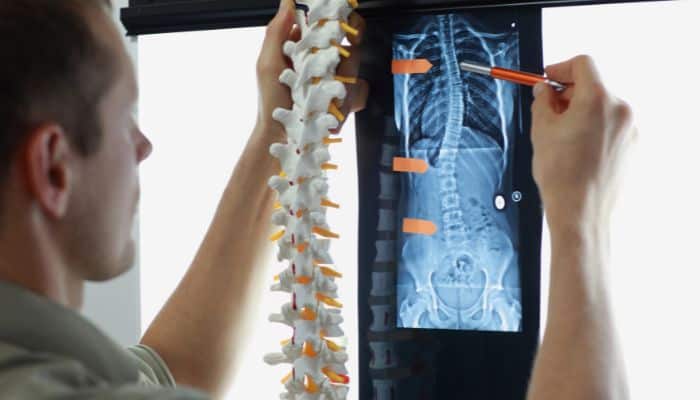If you or a loved one has been diagnosed with scoliosis, you may have many questions about what lies ahead. Learn four things to expect after a scoliosis diagnosis.
1. Medical Assessments and Treatment Options
Medical assessments typically involve physical examinations, imaging tests such as X-rays, and sometimes additional tests to determine the characteristics of the curvature. Your healthcare professional will discuss treatment options based on the assessments.
The recommended treatments can vary depending on factors such as the degree of curvature, your age, and your overall health. Common treatment options include observation, bracing, and physical therapy. Your provider may recommend surgery if the spinal curve is greater than 40 degrees.
2. Lifestyle Adjustments
Living with scoliosis might require lifestyle adjustments to manage the condition effectively. For instance, if you are prescribed a brace, you may need to wear it for several hours, throughout the day, or only at night. Adjusting to wearing a brace may be physically and emotionally challenging initially, but it can become more manageable over time.
Additionally, your doctor may recommend physical therapy to improve strength, flexibility, and overall posture. One of the most common mistakes made when managing scoliosis is to assume you cannot exercise. On the contrary, regular exercise and a healthy lifestyle can help you manage scoliosis and improve your overall well-being.
3. Emotional and Psychological Responses
A scoliosis diagnosis can have a significant emotional and psychological impact on the person diagnosed, as well as on their loved ones. It’s normal to experience a range of emotions, such as shock, fear, sadness, or frustration.
Coping with a new diagnosis and adjusting to potential lifestyle changes can be challenging. Seek emotional support from friends, family, or professional counselors who can provide guidance and support.
Support Networks
Online communities, support groups, and local organizations can provide valuable resources and emotional support. Engaging with others who have had similar experiences can help you gain insight, learn coping strategies, and build a support network that understands living with scoliosis.
4. Long-Term Monitoring
You should also expect long-term monitoring and follow-up care after a scoliosis diagnosis. Monitoring is especially important during periods of growth or development.
Your healthcare professional will likely schedule follow-up appointments to assess the progression of the curvature and adjust your treatment plan. These appointments may involve physical exams, X-rays, or other tests to track changes and evaluate treatment efficacy.






